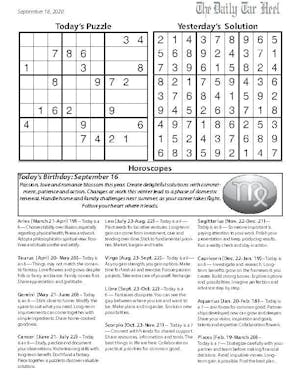The 2014 U.S. Senate election in North Carolina reflected interesting election trends for the state. They emphasize the unpopularity of recently unseated Sen. Kay Hagan and the Democratic Party.
There were some expected outcomes — turnout was much lower than in 2008 and 2012, the last two presidential years — but there were also some surprises. Republican Thom Tillis won his Senate seat with the lowest vote total in North Carolina since 2002.
This is also the first time a senator has been elected from North Carolina with less than 50 percent of the vote since 1972, the most recent election data available.
Midterm elections always have lower participation rates than presidential elections. This election saw 44 percent voter turnout — the same rate as 2010, more than the 37 percent turnout in 2006 and less than the 47 percent turnout in 2002.
Presidential elections, on the other hand, see much higher rates of participation; North Carolina had 64 percent turnout in 2004, 70 percent in 2008 and 68 percent in 2012.
This year marked the lowest number of votes a winning Senate candidate has had in North Carolina since Elizabeth Dole was first elected in 2002. The number of votes cast in this election was up by nearly 600,000 votes, but even though nearly 600,000 more people voted in the election, Tillis still received a lower number of votes than winning candidates have in previous elections.
This relative decline in participation could indicate Tillis’ unpopularity statewide, stemming from his work in the N.C. General Assembly or voter fatigue from either distrust in the political system or some other factor. Tillis still won the election, proving that despite his own apparent unpopularity, Hagan and the Democratic Party were much more unpopular.
The most worrying statistic for Democrats is the decline in the votes and percentage that Hagan received. Hagan received a high percentage of votes considering she lost, but she received nearly 900,000 fewer votes than in the 2008 election when she first assumed office. Though that was a presidential year, this should still worry Democrats because the state's electorate has increased in size since then.
Accounting for the increased size of the electorate and turnout, if Hagan had performed just as well in this election as in her first in 2008, then she would have received more than 138,000 additional votes, and she would have won the election.
The discrepancy likely comes from a decline in the popularity of Hagan, President Barack Obama and the Democratic Party in general. Hagan received around 800,000 fewer votes than President Obama did in the state in 2012; if Hagan had received even two-thirds of the number of votes Obama received in the North Carolina in 2012, she would have won re-election easily.
The results in North Carolina comport with national trends. Nationally, turnout increases in presidential elections compared to midterm elections and Republicans often fare better in midterms. This election in North Carolina appears to be unique, however, because each Senate candidate was relatively unpopular.
state@dailytarheel.com
To get the day's news and headlines in your inbox each morning, sign up for our email newsletters.




